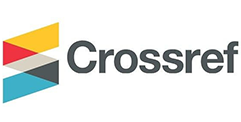Ang Wika sa Pampublikong Espasyo: Isang Pag-aaral sa Tanawing Pangwika ng Maynila
DOI:
https://doi.org/10.57106/scientia.v6i2.76Keywords:
Public Space, Linguistic Lanscape, Ethnoliguitic Vitality, top-down sign, bottom-up signAbstract
This research used descriptive approach to illustrate the Linguistic Landscape of the city of Manila as a center of commerce and
multiculturalism. The goal of the study is to identify or describe the languages that are seen or that exist in public spaces of the city, identify the vitality of languages and assess the implications of the language landscape of Manila in the Filipino language situation at present.
The researchers took pictures of signs in four selected areas in Manila. It was then categorized based on the taxonomy of Spolsky and Cooper which include: 1.) road signs; 2.) advertising signs; 3.) warning; 4.) names of buildings; 5.) informational signs; 6.) plaque plots; 7.) things; and 8.) graffiti. Photographs also categorized whether it is monolingual, bilingual or multilingual and if it is “top-down” or “bottom-up”.
The measure of the vitality of languages spreading across the city was based on the Ethnolinguistic Vitality (EV) theory used in the studies of Giles, Bourhis and Taylor to determine which language is the most dominant or widely used in the linguistic landscape.
This research only covers the description of the linguistic landscape of Manila by determining the languages existing in the city and their vitality as evident in the road signs, advertising signs, warning, name of buildings, informational signs, things and graffiti. . It also examined the implications of the linguistic landscape of Manila to the current situation or state of the Filipino language and the challenges it faces in its development.
It was discovered that there are six languages spreading and existing in the city such as: English, Filipino, Chinese, Korean, Japanese and Spanish. Among these languages, English is the most dominantly used.
This study shows that English language is given more importance than Filipino, which is the country’s national language. English language is being used in meaningful activities such as providing information, advertising signs, and building names. The researcher proposes further studies of language learning in other major cities in the Philippines to determine the extent of the spread of Filipino language and dialects thereby maintaining, strengthening and improving the country’s national language more than the value exhibited with the use of the English language.
References
Akindele, D. O. (2011). Linguistic Landscapes as Public Communication: A Study of Public
Signage in Gaborone Botswana. International Journal of Linguistics. Retrieved
from http://www.macrothink.org/journal/index.php/ijl/article/view/1157/pdf
Almario, V. S. (2003). Nasyonalisasyon ng Filipino. Wikang Filipino sa Loob at
Labas ng Akademya’t Bansa: Unang Soucebook ng SANGFIL 1994 – 2001. Manila:
Pambansang Komisyon para sa Kultura at mga Sining, 11 – 14.
Backhaus, P. (2007). Linguistic Landscapes: A Comparative Study of Urban Multilingualism
in Tokyo. SKY Journal of Linguistics. Retrieved from http://www.linguistics.fi/julkaisut/
SKY2007/ZABRODSKAJA_BOOK%20REVIEW.pdf
Ben-Rafael, et al. (2006). Linguistic Landscape as a Symbolic Construction of Public
Space: The Case of Israel. International Journal of Multilingualism, (3) 1. 7 – 30. Retrieved
from http://www.tandfonline.com/doi/abs/10.1080/14790710608668383
Bourhis, R. Y., Giles, H., & Rosenthal, D. (1981). Notes on the construction of a
“Subjective Vitality Questionnaire” for ethnolinguistic groups. Journal of Multilingual
and Multicultural Development, 2, 145 – 155. Retrieved from https://www.
researchgate.net/publication/254333394_Notes_on_the_construction_of_a_’Subjective_
Vitality_Question naire’_for_ethnolinguistic_groups
Burdick, C. (2012). Mobility and Language in Place:A Linguistic Landscape of Language
Commodification. Cultural Heritage in European Societies and Spaces. Retrieved from
h t t p : / / s c h o l a r w o r k s . u m a s s . e d u / c g i / v i e w c o n t e n t .
cgi?article=1006&context=chess_student_research
David, R. S. (2003). Politika ng Wika, Wika ng Politika. Wikang Filipino sa Loob
at Labas ng Akademya’t Bansa: Unang Soucebook ng SANGFIL 1994 – 2001. Manila:
Pambansang Komisyon para sa Kultura at mga Sining, 15 – 22.
De Quiros, C. (2003). Ang Kapangyarihanng Wika, Ang Wika ng Kapangyarihan.
Wikang Filipino sa Loob at Labas ng Akademya’t Bansa: Unang Soucebook ng
SANGFIL 1994 – 2001. Manila: Pambansang Komisyon para sa Kultura at mga Sining, 28 – 33.
Desiderio, L. (2012). NSO: Number of foreign citizens residing in Phl now over
177,000. The Philippine Star. Retrieved from http://www.philstar.com:8080/
headlines/2012/11/26/873745/nso-number-foreign-citizens-residing-phlnow-
over-177000
Espiritu, C. (2015) Language Policies in the Philippines. National Commision for
Culture and the Arts. Retrieved from http://www.ncca.gov.ph/about-culture-and-arts/articles-
on-c-n a/article.php?igm=3&i=217
Giles, H., Bourhis, R. Y. & Taylor, D. M. (1977). Towards a theory of language in
ethnic group relations. In H. Giles (Ed.). Language, Ethnicity and Intergroup Relations.
London, UK: Academic Press. Retrieved from https://www.researchgate.net/publication/
265966525_Giles_H_Bourhis_RY_Taylor_DM_1977_Towards_a_theory_of_language_
in_ethnic_group_relations_In_H_Giles_Ed_Language_Ethnicity_and_Intergroup_Relations_
pp_307-348_London_UK_Academic_Press
Gorter, D. (2013). Linguistic Landscapes in a Multilingual World. Annual Review
of Applied Linguistic. Cambridge University Press. 33, 190-212.
Harwood, J., Giles, H., & Bourhis, R. Y. (1994). The genesis of vitality theory: Historical
patterns and discoursal dimensions. International Journal of the Sociology
of Language. 108, 167-206. Retrieved from http://www.u.arizona.edu/~jharwood/
pdf/harwood%20giles%20bourhis%20IJSL%201994.pdf
Johnson, P., Giles, H., & Bourhis. R. Y. (1983). The viability of ethnolinguistic vitality:
A reply. Journal of Multilingual and Multicultural Development, 4, 255 – 269 Retrieved
from http://www.tandfonline.com/doi/abs/10.1080/01434632.1983.9994115
Landry R. & Bourhis, R. (1997). Linguistic Landscape and Ethnoliguistic Vitality:
An Empirical Study. Journal of Language and Social Psychology. Retrieved from
http://journals.sagepub.com/doi/abs/10.1177/0261927X970161002
Lumbera, B. (2003). Ang Usapin ng Wika at Panitikang Filipino at ang Paglahok
ng Pilipinas a Globalisasyon. Wikang Filipino sa Loob at Labas ng Akademya’t Bansa:
Unang Soucebook ng SANGFIL 1994 – 2001. Manila: Pambansang Komisyon
para sa Kultura at mga Sining, 11 – 14.
Pennycook, A. (1994). The cultural politics of Emglish as an international language,
London: Longman.
Santiago, C. C. (2016). Ang Filipino Bilang Wikang Opisyal. Pandiwa: Lathalaan
para sa Wika at Kultura. Manila: Komisyon ng Wikang Filipino, (4) 1, 53.
Santos, B. (2003). Ang SANGFIL at ang Dokumentasyon ng Pag-unlad ng Filipino.
Ang Wikang Filipino sa Loob at Labas ng Akademya’t Bansa: Unang Soucebook
ng SANGFIL 1994 – 2001. Manila: Pambansang Komisyon para sa Kultura at
mga Sining, 1– 6.
Slembrouck, S. (2011). Linguistic Landscapes in the City of Ghent: An Emperical
Study. Ghent University (Master’s Thesis). Retrieved from https://lib.ugent.be/fulltxt/
RUG01/001/786/702/RUG01-001786702_2012_0001_AC.pdf
Spolsky, B. (2009). Prolegomena to a Sociolinguitic Theory of Public Signage. In
E. Shohamy and D. Gorter (eds) Linguistic Landscape: Expanding the Scenery. London:
Routledge.
Torkington, K. (2009). Exploring the linguistic landscape: the case of the ‘Golden
Triangle’ in the Algarve, Portugal. Papers from the Lancaster University Postgraduate
Conference in Linguistics and Language Teaching. Retrieved from http://www.lancaster.
ac.uk/fass/events/laelpgconference/papers/v03/Torkington.pdf
Yagmur, K. & Kroon, S. (2003). Ethnoliguistic Vitality Perceptions and Language
Revitalisation in Bashkorotstan. Journal of Multilingual and Multicultural Development.
Retrieved from https://pure.uvt.nl/ws/files/817249/ethnolinguistic.pdf
Zafra, G. (2014). Ang Wika sa pampublikong espasyo: kaso ng tanawing pangwika
sa UP Campus. University of the Philippines. Manila
_________________. (2015). Safety signs and signals: The Health Safety (Safety Signs
and Signals) Regulations 1996. Health and Safety Executive. Retrieved from
_________________ . (2005). Rule XII: General Design and Construction Requirements
(2004 Revised IRR of PD 1096). Department of Public Works and Highways.
Retrieved from http://www.architectureboard.ph/1%20LAWS%20(&Regns)
ON%20ARCH3/National%20Building%20Code%20of%20the%20Philippines%20(Anotated)/
Rule%20 X_Signs.pdf
__________________. Industry Performance for Travel and Toursim. Department of
Tourism. Retrieved from http://www.tourism.gov.ph/pages/industryperformance.aspx
__________________. Philippines: Rules and Reguations on Trademarks, Service
Marks, Tradenames and Markedor Stamped Containers. Retreived from http://www.jpo.
go.jp/ shiryou_e/s_sonota_e/fips_e/pdf/philippines_e/e_syouhyou.pdf











